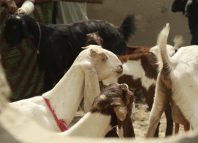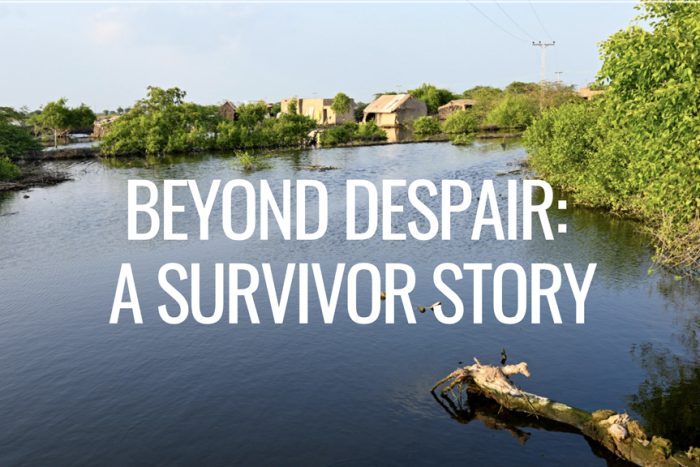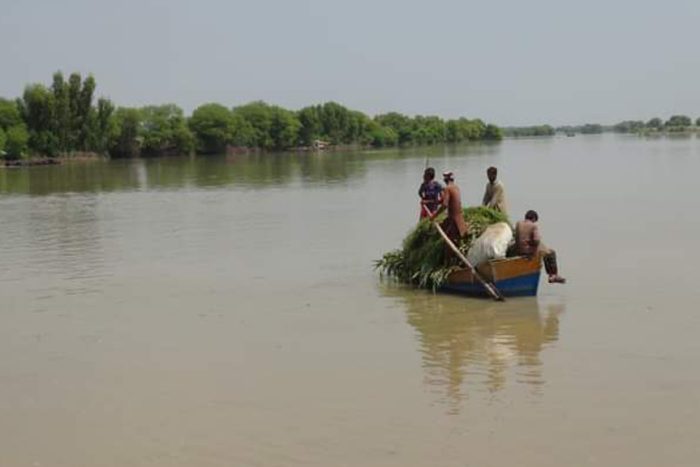A year on, Tooba Siddiqui, highlights how CWSA has worked towards mainstreaming quality, accountability and Safeguarding in flood response activities in Pakistan.
Archives
Once A Sanctuary
One Year of Recovery: Remembering Flood Survivours & The Road Ahead
ACT Alliance has been one of CWSA’s key partners in humanitarian response in the region. Their support ensured aid to thousands of flood affected families in Pakistan in 2023. ACT staff was in the field this month to monitor relief and response activities supported by the Appeal with a special message on the first anniversary of the disaster.
One Year of Recovery: Remembering Flood Survivours & The Road Ahead
As we mark the one year anniversary of Pakistan’s devastating Floods of 2022, our Regional Director, highlights how affected populations have survived one of the century’s worst climatic disasters and the needs that still exist.
Beyond Despair: A survivor story
Floods uproot rural communities in Pakistan again

Latest monsoon rains in Pakistan have once again lead to widespread flooding, taking lives, damaging roads, and disrupting the lives of thousands of local communities that were already grappling with recovery from last year’s floods. The 2022 floods had a profound impact on a large population of Pakistan’s mostly rural community, affecting 33 million people across the country and claiming 1,739 lives1.
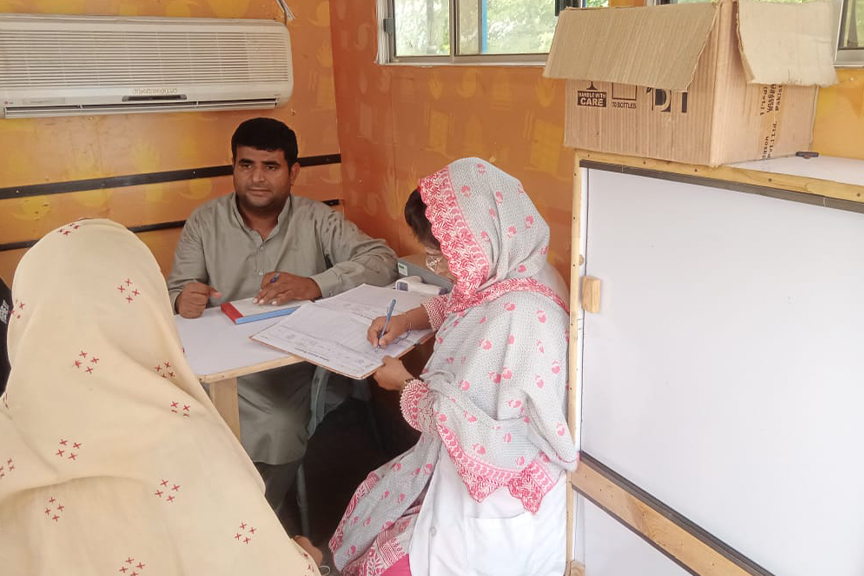
In initial response to the current floods, Community World Service Asia’s emergency team has conducted assessments in twenty-five villages, which were previously affected by last year’s floods, within the Khairpur district. This new wave of floods has again ravaged agricultural lands, livestock, and infrastructure of communities living in Taluka2 Sobhodero and Kingri.

More than 5,600 people and a total of 1,149 households in the two talukas have been severely affected by the latest round of floods. Many affected families have sought refuge on higher grounds. Some women and children have decided to stay in their homes, with the men of the families venturing out in search of daily wages and essential supplies to ensure basic survival at this time of crisis. As connecting roads to this part of the district remain submerged, affected communities have again resorted to using boats to access main roads.

Community World Service Asia, with the support of its partners, has launched immediate humanitarian response activities to support affected communities in Taluka Sobhodero and Kingri. Through our response, we are providing essential health services through mobile health units, offering curative and preventive consultations, outpatient care, antenatal care, postnatal care, health counseling, and health awareness sessions. The awareness sessions focus on preventive diseases, maternal and neonatal healthcare, and hygiene. Affected communities are in urgent need of food, healthcare services, veterinary support for their livestock, and assistance with transportation through boats to meet their survival needs during this crisis.


Note: Situation Update 1 on this emergency can be read here.
Contacts:
Shama Mall
Deputy Regional Director
Programs & Organisational Development
Email: shama.mall@communityworldservice.asia
Tele: +92-21-34390541-4
Palwashay Arbab
Head of Communication
Email: palwashay.arbab@communityworldservice.asia
Tele: +92-21-34390541
Sources:
www.ndma.gov.pk
www.arabnews.pk
https://pdma.gos.pk
https://reliefweb.int
www.nation.com.pk
1. National Disaster Management Authority (NDMA)
2. In Pakistan, a tehsil or (taluka) is an administrative sub-division of a District.
Heavy Rainfall triggers flooding in several areas in Sindh
Photo credit: CWSA staff in Khairpur, Sindh
According to the Flood Forecasting Division, the River Indus has experienced high flood levels at Guddu Barrage, with inflow ranging from 4,70,000 to 5,10,000 cusecs. Additionally, at Taunsa and Sukkur barrages1, Indus has been at a medium flood level.
This week’s monsoon rainfall in the upper catchment areas of the river has caused a surge in water levels at Guddu Barrage, with an inflow of 4,81,913 cusecs and an outflow of 4,61,563 cusecs.
In Ghotki2, a breach in the Zameendari Bund at Indus has resulted in the submergence of cotton, sugarcane and other crops and the disruption of land links for over ten villages, as shared by local sources. Another twenty villages in the Katcha area of Dadu district3 have also been flooded, leaving hundreds of acres of crops submerged. The situation has led people to move to safer areas on their own.
The Flood Forecasting Division predicts that River Indus will reach high flood levels at Guddu and Sukkur barrages within the next 12 to 24 hours, attributing the higher flows to rainfall in the river’s upper catchment areas. The upsurge in water level has also caused flooding in the katcha4 area of Pir Jo Goth and Gambat taluka in Khairpur district, leaving over seventy settlements stranded and at risk. Over 700 households of village Pandhi Mallah in district Khairpur have been left flooded after last night’s rains, with its people displaced and relocated to safe grounds, and disconnected from access to roads.
In upstream areas, the Indus River is experiencing low flood levels at Tarbela, Kalabagh, and Chashma, and medium flood levels at Taunsa Barrage.



Community World Service Asia Response:
Community World Service Asia’s emergency team is in communication with relevant stakeholders, including local authorities, disaster management agencies, and expected affected communities to ensure effective coordination and a timely response. Our team is on the ground, closely monitoring the situation and will immediately start relief operations when and if required. While focusing on preparedness, CWSA has developed a robust emergency response plan that outlines specific roles, responsibilities, and procedures to ensure a coordinated and efficient flood response.
Contacts:
Shama Mall
Deputy Regional Director
Programs & Organisational Development
Email: shama.mall@communityworldservice.asia
Tele: 92-21-34390541-4
Palwashay Arbab
Head of Communication
Email: palwashay.arbab@communityworldservice.asia
Tele: +92-21-34390541
Sources:
www.ndma.gov.pk
www.arabnews.pk
https://pdma.gos.pk
https://reliefweb.int
www.nation.com.pk
1. Sukkur Barrage is a barrage on the River Indus near the city of Sukkur in the Sindh province of Pakistan. Sukkur Barrage is used to control water flow in the River Indus for the purposes of irrigation and flood control. Head Taunsa Barrage is a barrage on the River Indus in Taunsa district of Dera Ghazi Khan District, Punjab province of Pakistan. And also controls water flow in the River Indus for irrigation and flood control purposes.
2. Ghotki District is a district of the province of Sindh.
3. Also in Sindh
4. Riverine area
Flood Risks High as Water Reservoirs near Maximum Capacity
Photo credit: www.arabnews.com
On Saturday, June 29th, the National Disaster Management Authority (NDMA) warned of expected monsoon rains affecting parts of Pakistan within the next 48 to 72 hours. Meanwhile the Pakistan Meteorological Department (Flood Forecasting Division) reported that the River Indus at Guddu & Sukkur (in Sindh province) are at a medium flood level. Since the onset of monsoon season on June 25th, the death toll from rain-related incidents has reached 173, with casualties including 72 children and 32 women.
According to NDMA’s latest report, recent spells of rains have resulted in the complete destruction of 258 houses and partial damage to 1,227 houses nationwide. In Sindh province, six union councils in Dadu district have been affected by flooding, impacting an estimated 183 villages and 102, 268 individuals. Main roads connecting the district are left submerged in water, leading people to use alternate routes for access1.
Pakistan’s key water reservoirs in Mangla and Tarbela are approaching maximum conservation levels (MCL) amid monsoon rains. Moderate flash floods in River Kabul tributaries and hill torrents in DG Khan are also anticipated, while the NDMA warns of the Sukkur Barrage experiencing high flood levels by July 31st. Moreover, a latest Pakistan Meteorological Department report forecasts a possibility of thunderstorms with lightning and rainfall in Punjab, Khyber Pakhtunkhwa, Gilgit-Baltistan, Islamabad, and Azad Jammu and Kashmir in the coming days.
Last year’s monsoon season left about one-third of the country flooded, claiming nearly 1,700 lives and an estimated damage of over $30 billion.
Community World Service Asia Response:
Community World Service Asia’s emergency team is in communication with relevant stakeholders, including local authorities, disaster management agencies, and expected affected communities to ensure effective coordination and a timely response. Our team is closely monitoring the situation and will immediately start relief operations when and if required. While focusing on preparedness, CWSA has developed a robust emergency response plan that outlines specific roles, responsibilities, and procedures to ensure a coordinated and efficient flood response.
Contacts:
Shama Mall
Deputy Regional Director
Programs & Organizational Development
Email: shama.mall@communityworldservice.asia
Tele: 92-21-34390541-4
Palwashay Arbab
Head of Communication
Email: palwashay.arbab@communityworldservice.asia
Tele: +92-21-34390541
Sources:
www.ndma.gov.pk
www.arabnews.pk
https://pdma.gos.pk
https://reliefweb.int
1 This information was also shared by UNOCHA, Pakistan.
Saleh, a debt-free man
When the deluge of 2022 hit village Kumbhar Bhada bringing down so many of those mud-plastered chaunras all around, Saleh Mangrio and his wife Shabana had a fall back. They salvaged what they could from their collapsing hut, particularly Shabana’s sewing machine and the large tin trunk out of which Saleh ran his small provisions and snacks store and escaped from their damaged home to another they owned that had stayed intact on a dune in the village.
With plastic sheeting protecting the snacks in his tin trunk, Saleh continued his little business. However, Shabana’s work as a seamstress suffered because in that time of uncertainty with nonstop rain teeming down and no work to be found for a community of unskilled workers, women did not want new dresses done up.
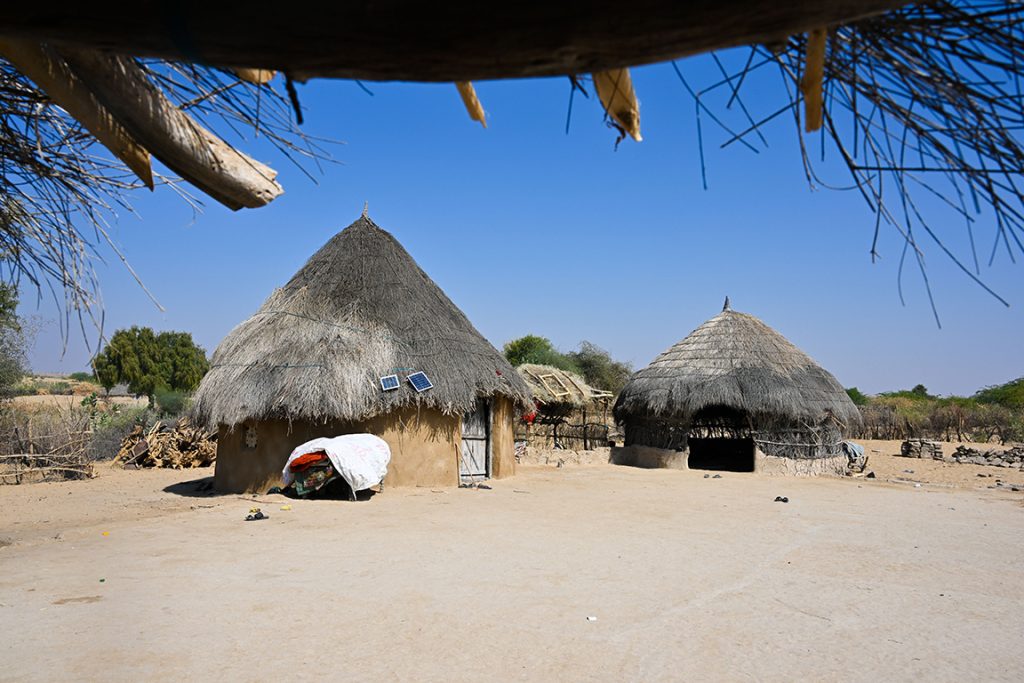
Meanwhile, in the summer of 2022, with seed provided under the Humanitarian, Early Recovery and Development (HERD), Saleh had sowed his three-acre holding with millets, mung and guar beans that he watched over with increasing anxiety as he knew the nonstop rain was likely to damage the yield. With food taken care of by the aid programme, Saleh’s primary worry as the deluge let off was for housing for the family and a place where his wife could again set up her own tailoring shop in their new location. He borrowed PKR 45,000 (Approx. USD 156) to strengthen the main chaunra, add another one, erect a thatched otaq to entertain his male visitors and even build a covered latrine.
Harvest rolled around in late October and Saleh recalled, “The harvest was not what should have been had the rain stopped after irrigating the sand. Nevertheless, it was enough for me to sell some for cash and repay my debt. And this was possible because the last two instalments of food aid took away our major worry and expense.”
His harvest was not the only commodity Saleh sold. He also had two male goats that fetched a reasonable price. Some of these proceeds serviced his debt, one part paid for a female goat and the rest was invested in the store. He reported that the store he started with stocks worth PKR 3500 (Approx. USD 12) just three years ago, was now worth PKR 16,000 (Approx. USD 56) at the end of 2022, fetching a net profit of about PKR 500 daily. He said that this investment in building his home and expanding his little store was possible only because of the food aid programme.

Asked what he thought was the greatest advantage of the food aid, agricultural training and input Saleh unequivocally said that it had kept him free of loan for the first time in some years.
“Normally, when crops fail and even though we recover the cost of the seed, it is loss because the reduced harvest cannot feed us. Most times we end up selling our livestock only to pay for food items. When I sold my goats late last year, I was not consuming the money but investing it in housing for the family. That was the win for us.”
The Mangrio family knows adversity as well as so many other natives of Umerkot. In 2021, he had fifteen goats, recalled Saleh. The drought was so bad that water ponds and even underground storage tanks dried up. All around the village livestock began to perish and Saleh acted swiftly to sell off five goats. The price was well below the going rate, but it could not be helped. At least he got something out of his livestock even as three of his animals perished.
But as 2023 dawned, Saleh Mangrio was happy that he still had four goats that were bound to multiply. Also, his store was fetching a little profit to pay for the daily kitchen expenses and, best of all, he was not under debt.
Falak Sher: Never give up
As a child Falak Sher dreamt of completing high school and joining the army. That was only natural for a child physically fit who from age ten was a kabaddi player. Though a contact sport, kabaddi is non-violent involving tagging and tackling and serious injuries are rare. However, that rarity struck Falak Sher when he was about twelve and in grade 4 of primary school.
During a match, he was tackled and brought down as had happened several times before. But this time the pang of shooting pain told him something had gone terribly wrong. Though his village Mehr Veesar lay some 50 kilometres southwest of Khairpur town, there were nearby hospitals as well. But Falak Sher was carried home rather than being taken to a proper medical centre.
His family called in the local bone-setter, an untrained potter who boasted knowledge passed down to him through several generations of bone-setters. Using splints and bandages, the man claimed to have set the bone right, but when two months later the dressing was removed, the leg was deformed. For the next five years, Falak Sher was bed-ridden because of persistent pain and inability to walk without support.
For the youngster the dream of being in military uniform faded away and even education seemed to have come to an end at grade 4. Time heals all, however, even badly set bones. After a break of five years, Falak Sher was able to walk back to school with the help of a staff. Though the military career was out of the question, yet the young man continued his schooling to complete matriculation. In a society where able-bodied men with degrees sometimes spend years seeking suitable jobs, there was no opening for a matriculate with a disability.
Already in his twenty-fourth year, Falak Sher apprenticed himself to a master weaver of the charpoy, the wooden bedstead. Within a year, he was sufficiently trained to independently turn an empty frame into a proper bed in under five hours. In 2023, at age thirty-eight, he was a highly proficient charpoy weaver who got calls on his cell phone when there was work.
“Life was getting along all right and I would get three to four charpoys every day,” said Falak Sher. That was enough work to keep him busy through the day and at Rs 400 per frame, he was a satisfied man.
Then came the floods of the summer of 2022. Whole communities lost everything they had and if Falak Sher’s house collapsed, he could hardly say Nature had singled him out for punishment. Flood-affected or not, people needed furniture to sleep on and if he thought that the broken charpoy frames would be repaired and he would be called to do the weaving, he was mistaken. No one had the money even to procure food for their families, and getting their bedsteads repaired was a very distant priority.
“For four months, it was a very difficult time because there was no work. In this village and a couple of other nearby ones, there are four other weavers like me, and we were all without anything to do,” reported Falak Sher.

Like many others, Falak Sher and his family lived by the generosity of a kind landlord who provided flood-affected families with one meal a day. Those were three months when he, the sole bread winner for his family, forewent meals so that his two year-old son was fed. His wife too needed to be fed as she was nursing an infant daughter. It was a very hard time.
Slowly work began to trickle in. However, because of his disability, Falak Sher had to hire a motorbike taxi to take him to the work site. That cost money. For short trips the fare was PKR 30, but longer ones set him back by PKR 100 (Approx. USD 0.3). Unlike the old days when he would get three to five pieces to work on in a day, now there was never more than one and subtracting the fare from his wage of PKR 400 (Approx., USD 1.4) hurt. But the man never gave up and assiduously kept at it.
In January 2023, Falak Sher received the first instalment of Cash for Food from Community World Service Asia (CWSA) with the support of Presbyterian World Service & Development(PWS&) and Canadian Foodgrains Bank (CFGB). Falak Sher spent the entire sum of PKR 12,000 on the purchase of food rations. For the first time in four months, he had a square meal, said the man. The following three months were the same pattern.
Being a talented craftsman, Falak Sher had not lost hope. And that paid off for in February he worked on twelve charpoys netting PKR 4800 (Approx. USD 15). The Cash for Food aid bolstered his hope and his ability to provide for his family. With work slowly picking up pace, the man was thinking of beginning to rebuild his collapsed home.
Asked how he would have fared without the cash grant, he remained silent. He had no idea how he and his family would have survived the hard months when there was so little work to be had.


